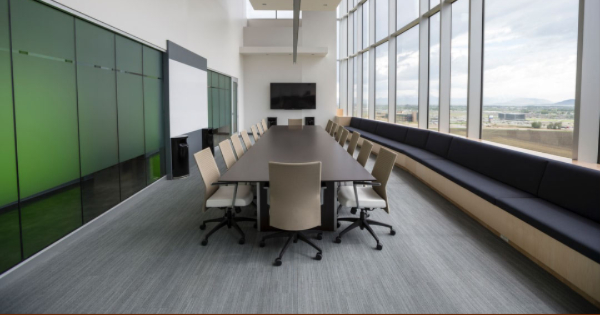Your business likely needs a video conference room if you want to streamline operations. In fact, over half of Millennials believe that better technology will render in-person conversations obsolete. While many employees may be satisfied using their mobile phone or webcam to make quick video calls, video conference rooms are often necessary to hold important meetings with people across the globe.
Video conference rooms provide many benefits above and beyond video calls from your office or cubicle.
- Privacy: Even though you are not doing anything untoward, there are conversations that you need to keep confidential. For example, phone calls with the company’s lawyer, accountant, and financial adviser may include discussions that employees do not need to know about.
- Higher-quality equipment: In a video conference room, the equipment is specifically selected by an audio video solution provider for video conferencing. By contrast, the webcam at your desk was probably selected for its compact size rather than its high quality.
- Better environment: In a conference room designated for video conferencing, the room is isolated from background noise and interruptions by coworkers. Just as importantly, a conference room’s lighting is likely designed for audio visual solutions.
- Larger space: Many video calls will involve groups of people on each end of the call. A video conference room will accommodate larger groups than an individual office or cubicle.
Once you decide to outfit one of your conference rooms for video calling, you must work with an audio video solution provider to make some decisions about the equipment you need. Here are three best practices considerations for outfitting a video conference room:
Bandwidth
The most annoying aspects of video calling are dropped calls, frozen video feeds, and poor audio quality. Often, these problems are caused by bandwidth .
Bandwidthis a measure of network capacity. It is not, contrary to popular belief, a measure of network speed. An analogy for explaining bandwidth is to think of your network as “plumbing” for data. Larger pipes carry more data than smaller pipes. Thus, a pipe that carries 100 megabits per second (or Mbps) is larger than a pipe that carries 20 Mbps.
To receive the volume of data necessary for a stable video call, a high bandwidth is necessary. One of the primary goals of an audio video solution provider is to ensure that your bandwidth is sufficient for your video conferencing needs.
Network Architecture
Your network’s architecture is the physical layout of your computer network, including the servers, user devices, routers, and switches. It is often the slowest, or lowest capacity, device in your network that sets the speed for the entire network. For example, if your business has a 20 Mbps router connected to a 50 Mbps cable Internet service provider, the router will be unable to take full advantage of your ISP’s bandwidth and will act as a bottleneck in your network. In the process of outfitting a video conference room, you will likely need to consult an audio video solution provider to ensure that your network hardware is capable of handling video calling.
Security
Unfortunately, every time computer security improves, hackers seem to keep pace. The best way to stop hackers is to have a networking and security solution designed for your system by an audio video solution provider. There are two issues raised when outfitting a video conference room.
- Hacked calls: If your network is not secure, your video calls may be hacked. Given that video calls could include confidential discussions, intrusion into your calls could be highly disruptive to your business. Hacking is of even greater concern if you routinely record your video calls. Not only could hackers access live calls, but could access the entire library of your past calls as well.
- Hacked network: If a device in your video conference room is not secure, it could provide a pathway for hackers to access the rest of your network. For example, a wireless camera with no password could provide hackers an open door.
A video conference room is no longer a luxury. In an increasingly globalized business environment, video conferencing can give your business a way to instantly connect with employees, partners, vendors, and suppliers around the world. This saves time and money, and provides real-time access in a way that travel cannot.

